Things You'll Need
Tree (a real one)
Natural bristle brushes (assorted sizes, disposable)
Liquid latex rubber
Cheesecloth (gauze)
Cornstarch or talc
Distilled water
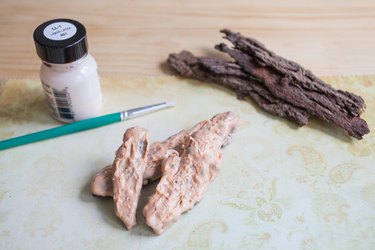
The secret to making a truly convincing fake tree is in the bark. It does not matter how shapely or nicely branched your cardboard or concrete construction is, if the bark texture is not right, the finished result will be disappointing. Fortunately, making good-looking bark is one of the easier steps in the fabrication of fake trees. It requires only simple tools and inexpensive materials to make a few "press pads" for creating texture in concrete, plaster, clay, epoxy putty or other malleable surface material.
Step 1
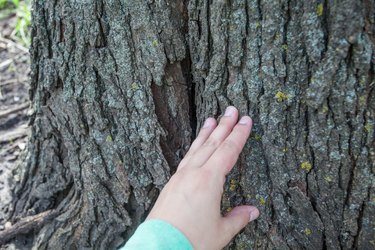
Brush loose soil or other debris from the surface of a real tree that has the kind of bark texture you would like to duplicate.
Video of the Day
Step 2

Open a can of liquid latex rubber. Stir well.
Step 3
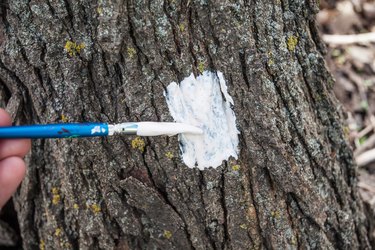
Dip a brush into the latex and carefully paint a layer of rubber directly onto the surface of the tree any place you would like to see bark. These patches can be as small or large as you like. Irregular shapes work best.
Step 4

Repeat the procedure in various places on the tree. Get texture from the main trunk, root areas, large and small limbs, etc. Tree bark texture is different in each area, and you need samples of every type.
Step 5
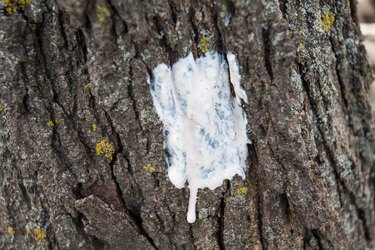
Allow rubber to cure completely. Wait until there are no soft or liquid areas left, particularly where the liquid latex would have pooled in crevices.
Step 6
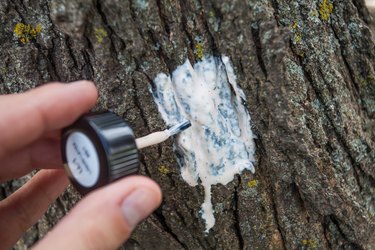
Paint another layer of latex on each of the patches you made the first time around. Allow to cure completely.
Step 7
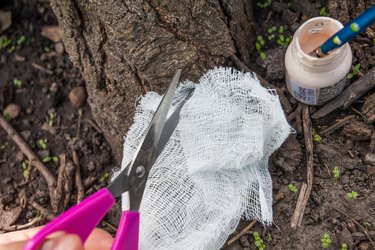
Paint a third layer of latex. This time, while the rubber is wet, cut a small piece of cheesecloth (the size of the patch) and place it over the wet latex. Use the brush to press it until it makes good contact with the wet latex to reinforce the rubber and make it stronger.
Step 8
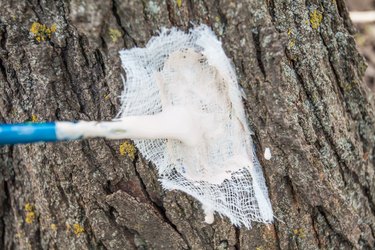
Continue painting layers of liquid latex--allowing patches to cure between each layer--until a pad about ¼-inch thick is built up. Be patient; this may take a few days.
Step 9
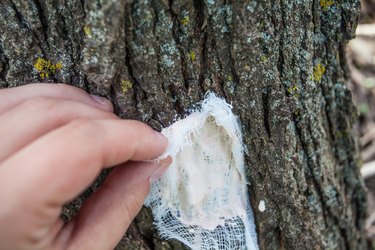
Take hold of the upper edge of each pad and--carefully--pull it loose from the tree. Roll it back upon itself as you remove it. Some bark will likely come loose, but do not worry about those at this point.
Step 10
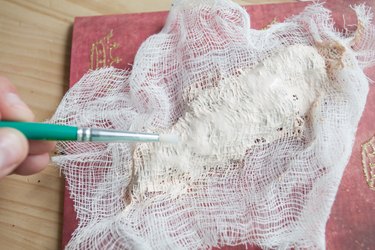
Examine the pads. Use a toothpick or similar tool to pry away any bark still adhering to the pad. Brush small bits away with a dry paintbrush. After you have removed loose debris, wash the pads in warm water to clean away any remaining soil, and let them dry.
Step 11
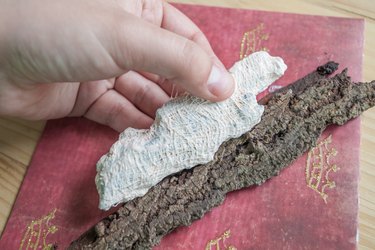
Use pads to make bark texture on fake trees by pressing them into the soft, uncured material of the tree's surface. "Press pads" can be used on concrete and resins, as well as other malleable materials.
Step 12

Wash and dry pads. Dust them all over with cornstarch or talc to store.
Tip
Use distilled water to clean brushes between applications of rubber. Ordinary tap water will not work as the minerals in it will interact with the latex and cause it to curdle. Your brushes will be ruined for further use.
Video of the Day